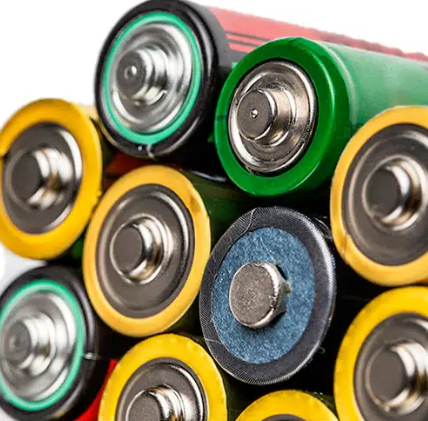Difference between Supercapacitors and Lithium Batteries
In the realm of energy storage, two prominent technologies have emerged as frontrunners, each offering unique advantages and catering to diverse applications: supercapacitors and lithium batteries. Both play pivotal roles in powering our modern world, yet their functionalities, characteristics, and applications differ significantly. This article will explain the differences between them: Supercapacitors VS Lithium Batteries.

Supercapacitors: The Power of Rapid Energy DischargeSupercapacitors, also known as ultracapacitors or electric double-layer capacitors (EDLCs), excel in rapid energy discharge and high-power applications. Unlike traditional capacitors, supercapacitors store energy electrostatically, using a porous material with a large surface area to achieve high capacitance. This allows them to deliver bursts of power quickly, making them ideal for applications requiring rapid energy release, such as regenerative braking in vehicles, peak power shaving in electronics, and short-term energy storage solutions.
Lithium Batteries: The Champion of Energy DensityLithium batteries, on the other hand, are renowned for their high energy density, making them a preferred choice for applications requiring extended power supply. These batteries operate based on the movement of lithium ions between positive and negative electrodes during charge and discharge cycles, offering a relatively higher energy storage capacity compared to supercapacitors.
Difference between Supercapacitors and Lithium BatteriesSupercapacitors VS Lithium Batteries: Key FeaturesSupercapacitors:
High Power Density: Supercapacitors boast high power density, enabling them to quickly store and discharge energy. However, their energy density (the amount of energy stored per unit volume) is lower compared to lithium batteries.
Long Cycle Life: They have a longer cycle life than most batteries, enduring hundreds of thousands to millions of charge-discharge cycles without significant degradation.
Fast Charging: Supercapacitors can charge and discharge rapidly, offering quick energy replenishment and release.
Lithium Batteries:
High Energy Density: Lithium batteries have a higher energy density than supercapacitors, allowing them to store more energy per unit volume or weight.
Stable Voltage: They provide a stable voltage output, making them suitable for continuous power supply in various applications, including portable electronics, electric vehicles, and grid energy storage.
Longer Discharge Duration: Lithium batteries are designed for longer discharge durations, providing a consistent power supply over extended periods compared to supercapacitors.
Supercapacitors VS Lithium Batteries: ApplicationSupercapacitors find their niche in applications requiring quick bursts of power, such as in hybrid vehicles for regenerative braking, backup power systems, and some wearable electronics.
Lithium batteries dominate in scenarios demanding longer-term energy storage, such as smartphones, laptops, electric vehicles, and stationary energy storage systems for renewable energy sources like solar and wind.
Supercapacitors VS Lithium Batteries: ConstructionSupercapacitors store energy electrostatically using two electrodes and an electrolyte. They typically consist of high surface area electrodes (often activated carbon) with a separator and an electrolyte in between.
Lithium-ion batteries store energy through chemical reactions in electrodes made of lithium compounds (like lithium cobalt oxide, lithium iron phosphate) separated by an electrolyte.
Supercapacitors VS Lithium Batteries: Energy Storage MechanismEnergy is stored as an electrical charge at the interface between the electrode and electrolyte. They have a high surface area, allowing for high capacitance but lower energy density compared to batteries.
Energy is stored in the form of chemical energy within the battery’s electrodes.
Supercapacitors and Lithium Batteries
SummaryBoth supercapacitors and lithium-ion batteries have their unique strengths and limitations, making them suitable for different applications based on the specific requirements of power, energy, and lifespan. Integration of both technologies is sometimes seen in systems that require both high power and energy storage capabilities.
The choice between supercapacitors and lithium batteries depends on the specific requirements of the application. Supercapacitors excel in high-power, rapid discharge applications, while lithium batteries offer higher energy density and longer-term energy storage capabilities. As technology advances, efforts are underway to bridge the gap between these technologies, aiming to create hybrid solutions that leverage the strengths of both to meet a broader spectrum of energy storage needs.
在线留言询价
- 一周热料
- 紧缺物料秒杀
| 型号 | 品牌 | 询价 |
|---|---|---|
| RB751G-40T2R | ROHM Semiconductor | |
| MC33074DR2G | onsemi | |
| CDZVT2R20B | ROHM Semiconductor | |
| TL431ACLPR | Texas Instruments | |
| BD71847AMWV-E2 | ROHM Semiconductor |
| 型号 | 品牌 | 抢购 |
|---|---|---|
| BU33JA2MNVX-CTL | ROHM Semiconductor | |
| TPS63050YFFR | Texas Instruments | |
| STM32F429IGT6 | STMicroelectronics | |
| ESR03EZPJ151 | ROHM Semiconductor | |
| BP3621 | ROHM Semiconductor | |
| IPZ40N04S5L4R8ATMA1 | Infineon Technologies |
- 周排行榜
- 月排行榜
AMEYA360公众号二维码
识别二维码,即可关注


请输入下方图片中的验证码:






















